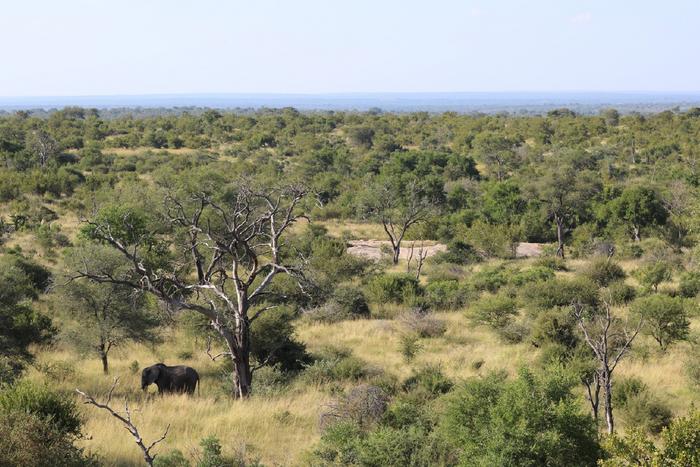In recent years, the escalating impact of global warming has prompted efforts to reverse troubling trends, often by planting trees to capture and remove carbon dioxide from the atmosphere and store it. New research from a team led by Young Zhou, from the Quinney College of Natural Resources and the Ecology Center, shows that, in addition to trees, humble grasses also play an essential role in capturing carbon — more important than previously thought.

Credit: Yong Zhou
In recent years, the escalating impact of global warming has prompted efforts to reverse troubling trends, often by planting trees to capture and remove carbon dioxide from the atmosphere and store it. New research from a team led by Young Zhou, from the Quinney College of Natural Resources and the Ecology Center, shows that, in addition to trees, humble grasses also play an essential role in capturing carbon — more important than previously thought.
A recent initiative set its sights on capturing carbon in tropical savannas, an ecosystem characterized by shared space of trees and grasses. The project initiated a tree planting effort (afforestation) to capture carbon dioxide from the air, which resulted in stored carbon in two primary places: the woody biomass of the growing trees, and in soils. While the effectiveness of storing carbon in trees has been well-established in research, how carbon storage functions in soils was not well defined, and Zhou and his colleagues set out to determine the role grasses played in this effort.
The team, which included scientists from Yale University, Lawrence Berkeley National Laboratory, University of Cape Town, Texas A&M, Kruger National Park, Harvard University, and University of Oregon, conducted a comprehensive study investigating the contribution of grasses to carbon content in savannas soils and assessed the potential impact of increasing tree cover in tropical savannas on soil carbon storage. The study was published in the journal Nature Geoscience.
Using the case study conducted in Kruger National Park, South Africa, and data synthesized from tropical savannas worldwide, the research team demonstrated that savanna soils enriched with carbon from grasses exhibited comparatively higher concentrations of carbon. Their findings showed that grasses accounted for over half of the soil carbon content across tropical savannas, including soils directly beneath trees. This underscores the significant role that grasses play in the accumulation of carbon within tropical savannas.
Their findings showed both carbon gains and losses, as tree cover increased across tropical savannas. The most significant variation was observed in savannas receiving higher rainfall, where tree planting is more likely to thrive, as well as in areas with clay soils and savanna sites that had substantial contributions of carbon storage from grasses.
“This underscores the nuanced nature of increasing tree cover on the dynamics of carbon in savanna soils,” Zhou said. “On average, the increase in soil carbon storage resulting from the expansion of tree cover across tropical savannas is negligible.”
This finding aligns with the team’s previous research published in Nature, which demonstrated that increasing tree cover due to fire suppression led to increased carbon storage in woody biomass, but did not affect soil carbon storage.
“Our findings challenge the commonly held assumption that afforestation uniformly boosts soil carbon storage,” Zhou said. “However, we have yet to pinpoint the precise factors responsible for the substantial variation observed in the soil carbon storage response to increased tree cover across tropical savannas.”
In general, forests primarily store their carbon in the woody trunks and aboveground leaves. In contrast, a significant portion of carbon in grassy ecosystems, such as savannas and grasslands, is stored in the soil, primarily within the extensive root systems of the grasses as well as decaying organic matter. In the context of long-term carbon storage, carbon retained in soils proves to be more reliable, particularly for a vulnerable future marked by warming and increased likelihood of drought and wildfires, he said.
“It makes even more clear that savannas play crucial roles in the global carbon cycle in their unique ways, underscoring the importance of preserving and protecting these ecosystems in an equitable manner,” he said.
Journal
Nature Geoscience
DOI
10.1038/s41561-023-01232-0
Method of Research
Case study
Subject of Research
Not applicable
Article Title
Soil carbon in tropical savannas mostly derived from grasses
Article Publication Date
27-Jul-2023




